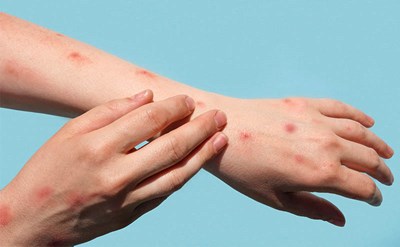The nation’s emergency departments are the first, and sometimes the only point of care for surging numbers of young patients with mental health emergencies. More support and resources are needed to provide best care, three leading national organizations proclaim in joint policy statement.
The time is now to improve access to emergency care for the rising numbers of children and adolescents seeking help for mental and behavioral health emergencies. Strategies to address challenging circumstances that affect prehospital services, the surrounding community and, ultimately, patient care are needed.
That is the message conveyed in an updated policy statement by the American Academy of Pediatrics (AAP), American College of Emergency Physicians (ACEP) and Emergency Nurses Association (ENA), which joined to provide recommendations for management of mental and behavioral health care in emergency departments.
The three national organizations call for systemic changes, more resources, and a focus on inequities within the statement, “The Management of Children and Youth with Pediatric Mental and Behavioral Health Emergencies.”
The statement and an accompanying technical report are published in the September 2023 Pediatrics. The statement is also published in September’s Annals of Emergency Medicine and Journal of Emergency Nursing (published Aug.16 online). Policy statements created by AAP are written by medical experts, reflect the latest evidence in the field, and go through several rounds of peer review before being approved by the AAP Board of Directors and published in Pediatrics.
“Many emergency departments lack sufficient personnel, capacity, and infrastructure to triage and treat patients with mental and behavioral emergencies,” said Mohsen Saidinejad, MD, MS, MBA, FAAP, FACEP, a lead author of the policy statement and member of the AAP and ACEP committees on Pediatric Emergency Medicine. “This increases the likelihood of lengthy wait times, crowded facilities and other challenges that compromise patient care. In many cases, an inadequate mental health infrastructure gives families nowhere else to turn but the emergency department. It’s a dilemma we’re experiencing more often since the COVID pandemic began.”
Every year, approximately half a million children with mental health and behavioral health conditions are evaluated in emergency departments for psychiatric emergencies, and those numbers have increased over the past decade. Many communities offer limited mental health resources, and as a result, emergency departments have become a critical access point and safety net for those requiring care.
The AAP, ACEP and ENA also note disparities in access to care based on insurance status, gender identity, language preference, the geographic location of mental health specialists and inpatient psychiatric units, and race and ethnicity. In one study analyzing suicide rates in U.S. youth from 2001-2015 among children 5 to 12 years old, the suicide rate was approximately two times higher for Black children compared with white children.
“Mental and behavioral health emergencies are on the rise and escalating among children and youth,” said Christopher S. Kang, MD, FACEP, president of ACEP. “Emergency physicians continue to do all they can for these vulnerable patients, while limited community and specialty resources, staffing challenges and systemic inequities accentuate systemic gaps in care. These factors add to the challenges in already crowded emergency departments with limited bed space available. Compassionate, collaborative solutions are needed to improve local and national approaches to preventing and treating mental and behavioral emergencies.”
The organizations recommend strategies to be used in prehospital settings, at the emergency department, and at the community level, as well as the overarching systems of care. The groups detail where research is needed, such as ways to provide evidence-based guidelines and best practices for emergency department screening tools, assessment, consultation, acute management, and follow-up care related to children’s mental health crises.
“Children and adolescents deserve the best care when they come to the Emergency Department during a mental or behavioral health crisis, as anyone does. But many times, a lack of resources can complicate matters,” said Terry Foster, MSN, RN, CEN, CPEN, CCRN, TCRN, FAEN, president of the Emergency Nurses Association. “This can leave individuals struggling with their mental or behavioral health in the Emergency Department for extended periods of time, leading to overcrowding, among other things. An increase in treatment education and resources can only continue to improve the care provided for not just youth, but all mental and behavioral health patients.”
Other recommendations:
- Engage with the community to develop appropriate emergency department transfer strategies, including appropriate referrals to psychiatric crisis units, within psychiatric facilities or community mental health centers.
- Develop mental health mobile crisis teams to be able respond to schools, physicians’ offices, and homes.
- Provide resources for emergency department staff related to recognize and provide initial care to children and youth with potentially increased risks of mental and behavioral health concerns including LGBQT+ youth; victims of maltreatment, abuse, or violence; pre-existing conditions such as autism spectrum disorder or developmental delays; post-traumatic stress; depression; children in the child welfare system; youth in the juvenile justice system; and suicidality.
- Emergency departments should develop a systematic method to assess patients and follow protocols in triage, safety assessment, monitoring, mental health and medical evaluation/
- Embed pediatric-trained mental health professionals into emergency department teams when possible.
- Address inequities by increasing screening, identification, treatment and referrals of emergency department patients for mental and behavioral health symptoms.
The organizations agree that emergency departments would benefit by providing a dedicated multidisciplinary approach to provide patients with trauma-informed services.
“The time has come to address the mental health crisis of our youth,” Dr. Saidinejad said. “Mental health emergencies are just that – emergencies. Children and families deserve timely, affordable, and equitable access to care and treatment, just as they would if they present with a broken arm, a seizure or a serious infection.”
About the American Academy of Pediatrics
The American Academy of Pediatrics is an organization of 67,000 primary care pediatricians, pediatric medical subspecialists and pediatric surgical specialists dedicated to the health, safety and well-being of infants, children, adolescents and young adults.
About the Emergency Nurses Association
The Emergency Nurses Association is the premier professional nursing association dedicated to defining the future of emergency nursing through advocacy, education, research, innovation, and leadership. Founded in 1970, ENA has proven to be an indispensable resource to the global emergency nursing community. With 50,000 members worldwide, ENA advocates for patient safety, develops industry-leading practice standards and guidelines and guides emergency health care public policy. ENA members have expertise in triage, patient care, disaster preparedness and all aspects of emergency care. Additional information is available at www.ena.org.
 American College of Emergency Physicians
American College of Emergency Physicians







